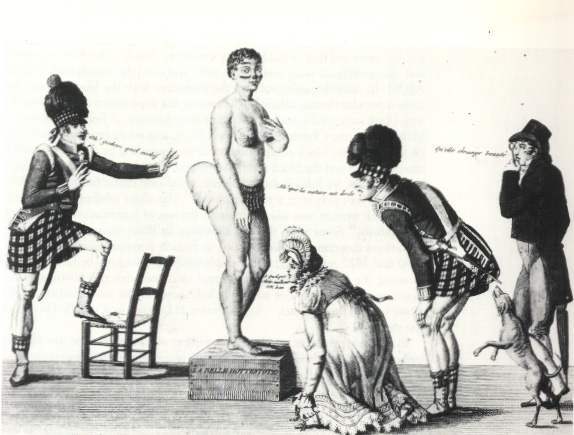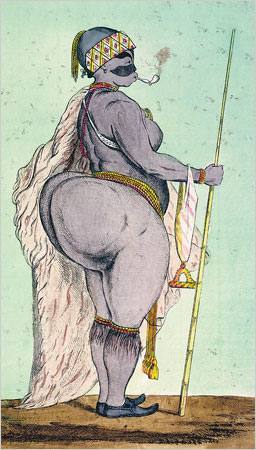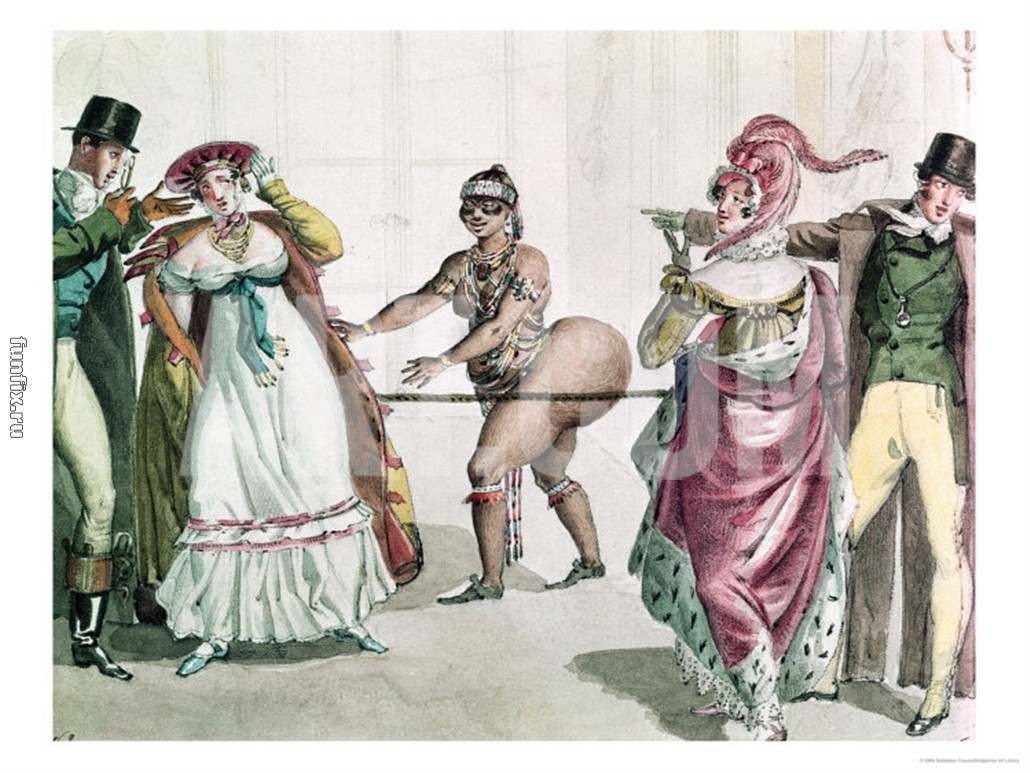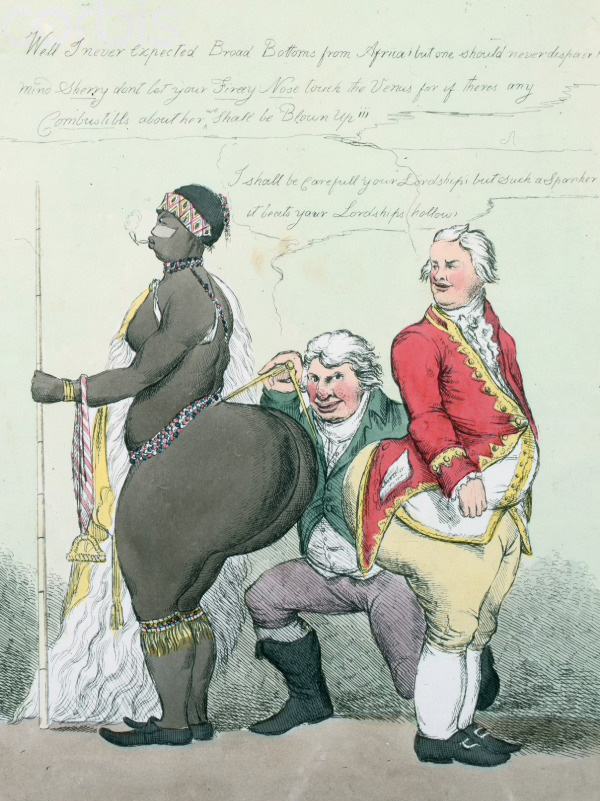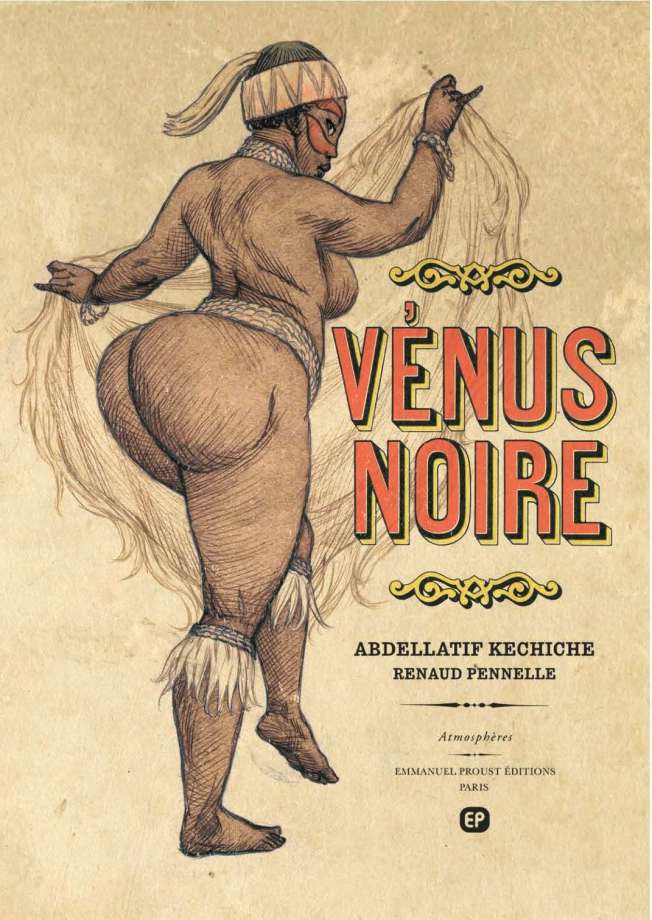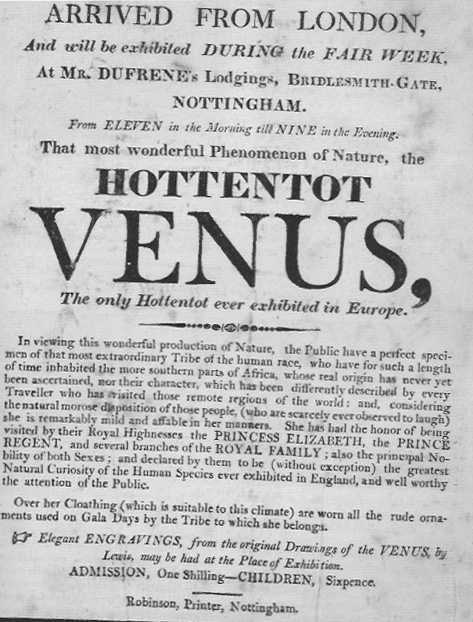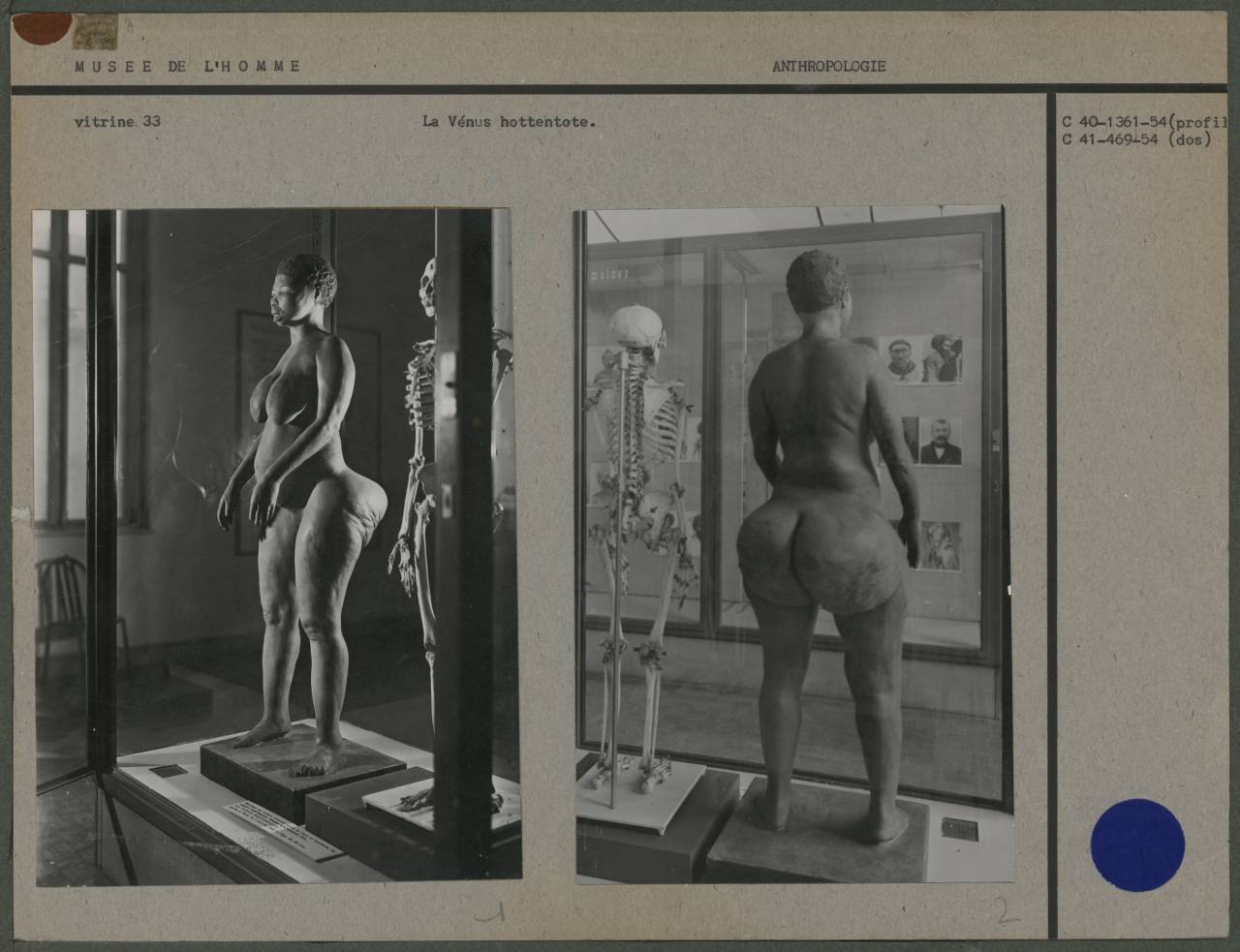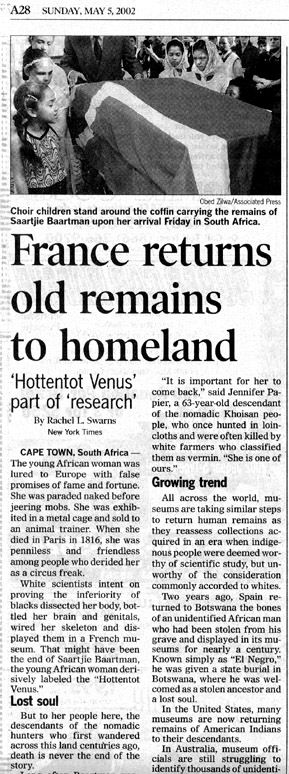“Her contour and formation certainly surpass any thing of the kind ever seen in Europe, or perhaps ever produced on Earth” – The London Morning Post on The Hottentot Venus
Saartjie Baartman became The Hottentot Venus. No. that’s not it. Let’s being anew. A woman whose original name is not even known became Saartjie Baartman, who became The Hottentot Venus.
Brought to Europe from her native Namibia in 1910, Saartjie’s enlarged hypertrophic genital organs and prominent buttocks made her a “freak show’. Promoters described Baartman’s genitalia as “resembling the skin that hangs from a turkey’s throat”.
She appeared – all 4ft 7inches tall of her – semi-naked and confined inside a bamboo cage in London’s smart Piccadilly, a carnival attraction at a circus of human curiosities that featured such oddities as “the Living Skeleton” and a 19-inch “Sicilian Fairy”.
She was displayed on a “stage two feet high, along which she was led by her keeper and exhibited like a wild beast, being obliged to walk, stand or sit as he ordered”. From there she was moved to Bartholomew Fair and Haymarket.
There were private viewings, too. Dr Clifton Crais, a professor of history at Emory University, says for a few pennies more, you could give her a prod.
London was a haven for those seeking to see the unusual.
Aware of the power of external display, and deeply imbued with a knowledge of human nature, the proprietor of the PROMENADE OF WONDERS, which we are about to notice, rivets the attention of passers-by by the gratuitous exhibition which his unbounded collection enables him to set forth.. The two Fat Boys – brothers, as we are told – are here the principal objects… Doubtless they had the same elements of grandeur in their composition; but from impending circumstances, which kept them from shooting up in a similar manner, they grew sideways instead of upright, like ivy in a cleft of masonry – Punch, Jan-Jun 1843
The walls of the Egyptian Hall in Piccadilly are placarded from top to bottom with bills announcing the exhibition of some frightful object within and the building itself will soon be known as the Hall of Ugliness. We cannot understand the cause of the now prevailing taste for deformity, which seems to grow by what it feeds upon. The first dose administered to this morbid appetite was somewhat homoeopathic, being comprised in the diminutive form of TOM THUMB; but the eagerness with which this little humbug was devoured – at least by female kisses – has caused the importation, on a much larger scale, of all sorts of lusus naturae and specimens of animated ugliness, which form a source of attraction to the public, and are exhibited with success in the very building where HAYDON in vain invited attention to the creations of his genius.
If Beauty and the Beast should be brought into competition in London, at the present day Beauty would stand no chance against the Beast in the race for popularity. – Punch, Jul.-Dec. 1847
. . went to see the Siamese Twins, who are exhibiting at the Egyptian Hall, where they were forty years ago. It is strange to see a human being who is not completely rounded off from every other: but the apparent duality here is much less than I expected. You simply see two small elderly Mongolian men, grizzled & wizened, closely alike in feature & make & height, but each evidently in act and volition an individual. They lean on each other as they stand or walk, & the flesh bond that connects them (5 inches long and as thick as a strong man’s wrist) is just seen through their open shirtfronts. With them was the daughter of one; a tall well-made young woman, good looking, and like an English farmer’s daughter, though her father is an abnormal Siamese. But her mother is an American of English descent. – Arthur Munby, Diary, 12 February 1869
One of the regular show shops has a weird predilection for dead skeletons. Two or three of them have a touching belief in the attractiveness of freaks preserved in spirits and these are plentiful, whereas the living article is by way of becoming scarce in London, for good live freaks gravitate to Barnum’s nowadays unless a minor showman is lucky enough to hear of them in time and intercept them. It is true you may even yet be startled by seeing in a shop window a presentment of an elephant-headled man larger than life, with one leg elephantine and the other human, and a writhing trunk of the first water ; but inside you discover that he dwindles to a leathery-looking object pickled in a glass jar, and having the appearance of a fossilised small boy playing a flageolet.
Nevertheless there was once a real elephant-headed man about town; likewise an elastic-skinned man, and other personages equally gifted, and you may go and see them immortalised in wax to this day in one of the permanent penny waxworks but in the flesh, Sideshow London knows them no more. – George R. Sims (ed.), Living London, 1902
Those buttocks were on-message:
Baartman’s seminaked display left little to the imagination and reinforced England’s obsession with bottoms, both literally and figuratively. (The political scene was rife with speculation over whether Lord Grenville, known for his extraordinary derrière, and his Whig coalition, known as the broad bottoms, would take over Parliament if George III abdicated.) Baartman’s arrival was, as Holmes points out, “a journalist’s dream.” She goes on to observe that “the obsession with Saartjie’s posterior, posterity and broad bottomedness, and the endless punning on rear ends, rumps, fundaments and fat arses became explicitly tied to the most pressing and topical political issues concerning the decline of King George, the rise of the Regency and which rumps would take over government.”
Baartman never did get rich, as that ‘contract’ promised she would. She turned to prostitution and alcoholism. She died in Paris in 1915.
………………….
Saartjie Baartman was born in 1789 to a Khoikhoi family. 1789 was the year of the French revolution, the movement that marched on ideas of equality and liberty.
South African History tells us “her mother died when she was aged two and her father, who was a cattle driver, died when she reached adolescence. Sara married a Khoikhoi man who was a drummer and they had one child together who died shortly after birth.” Her husband was killed by Dutch settlers.
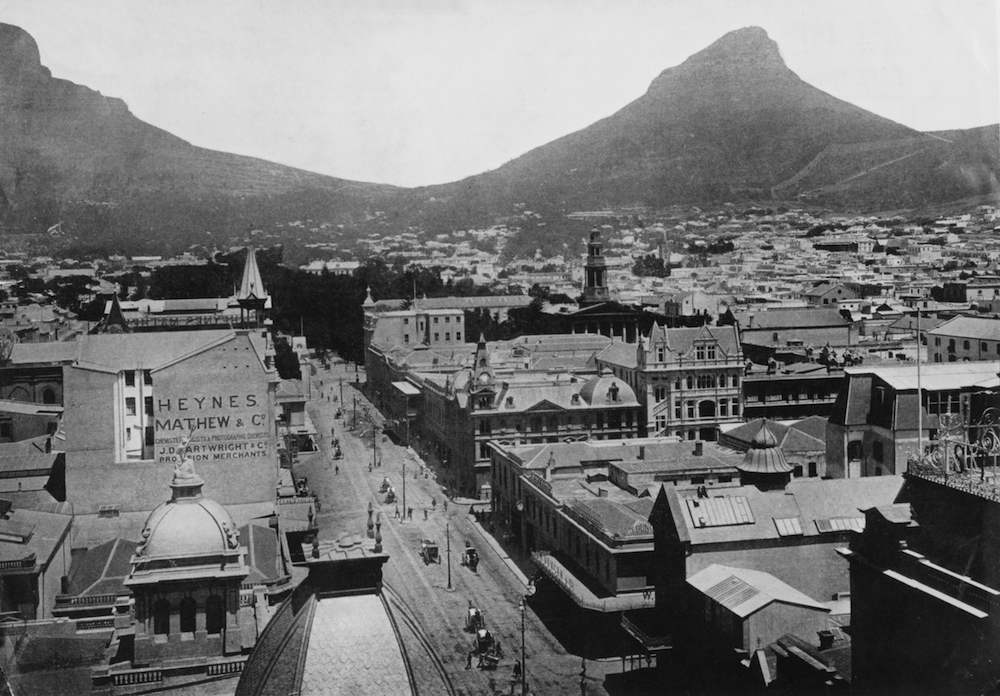
A view of Adderley Street in Cape Town, South Africa, from the tower of the Post Office, with Lion’s Head mountain in the background, circa 1890. This suburb is known as ‘Tamboer’s Kloof’, (Photo by Pocock/Hulton Archive/Getty Images)
What becomes of a black African woman orphaned and widowed?
South African History tells her story:
…she was sold into slavery to a trader named Pieter Willem Cezar, who took her to Cape Town where she became a domestic servant to his brother. It was during this time that she was given the name ‘Saartjie’, a Dutch diminutive for Sara.
On 29 October 1810, Sara allegedly ‘signed’ a contract with an English ship surgeon named William Dunlop who was also a friend of Cezar and his brother Hendrik.
Dunlop was the medic at Cape Town’s Slave Lodge. It it most likely where he met Baartman. Was he an innocent? Whilst living in In Cape Town, Baartman gave birth to three babies, all of whom died. “One was fathered by Van Jong, a low-ranking drummer in the Dutch infantry,” notes Susan Frith. “The couple lived unofficially as husband and wife for two years, until Van Jong’s battalion was disbanded and he returned to Holland.”
The aforesaid ‘contract’ was an agreement that she would work for Dunlop and Cezar, and perform as a dancer.
During her time with Dunlop and Hendrik Cezar, the campaign against slavery in Britain was in full swing and as a result, the treatment of Baartman was called into question. Her “employers” were brought to trial but faced no real consequences. They produced a document that had allegedly been signed by Sara Baartman and her own testimony which claimed that she was not being mistreated. Her ‘contract’ was, however, amended and she became entitled to ‘better conditions’, greater profit share and warm clothes.
In September 1814, Sara arrived in France, where she was sold to a man named Reaux.
He began exhibiting her in a cage alongside a baby rhinoceros. Her “trainer” would order her to sit or stand in a similar way that circus animals are ordered…
Her constant display attracted the attention of George Cuvier, a naturalist. He asked Reaux if he would allow Sara to be studied as a science specimen to which Reaux agreed. As from March 1815 Sara was studied by French anatomists, zoologists and physiologists. Cuvier concluded that she was a link between animals and humans. Thus, Sara was used to help emphasise the stereotype that Africans were oversexed and a lesser race.
When Sara Baartman died in 1816, Cuvier obtained her remains from local police and dissected her. He made a plaster cast of her body, pickled her brain and genitals and placed them into jars which were placed on display at the Musée del’Homme (Museum of Man) until 1974.
In life a freak – in death a specimen.
Following the African National Congress (ANC)’s victory in the South African elections, President Nelson Mandela requested that the French government return the remains of Sara Baartman so that she could be laid to rest…. On the sixth of March 2002, Sara Baartman was brought back home to South Africa where she was buried. On 9 August 2002, Women’s Day, a public holiday in South Africa, Sara was buried at Hankey in the Eastern Cape Province.
Her remains were returned to South Africa
On Women’s Day, 9 August 2002, ‘Sara Friday’ was buried in the area of her birth, the Gamtoos River Valley in the Eastern Cape.
Would you like to support Flashbak?
Please consider making a donation to our site. We don't want to rely on ads to bring you the best of visual culture. You can also support us by signing up to our Mailing List. And you can also follow us on Facebook, Instagram and Twitter. For great art and culture delivered to your door, visit our shop.

